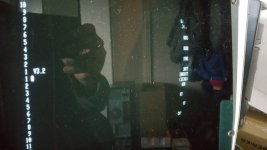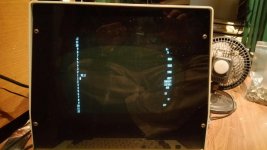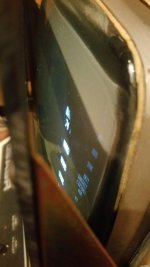falter
Veteran Member
Don't know if you guys have seen these things before, but I picked up this non-working one for $40, hoping to use it with various projects I have going (after I fix it)
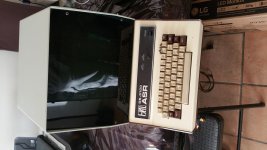
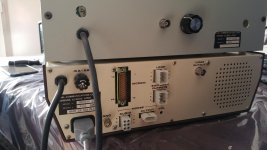
It has a female 3 prong hanging above the male 3 prong for the wall outlet. Not sure what it's for. The CRT has its own power cord, when I plug it in, I can see the back of the CRT tube glowing a little, but that's it. When I plug the bottom in and flip the power switch, the power light lights up, but that's it there. I'm wondering if that BNC connector on the back means what it says and I could connect the bottom half to another monitor to confirm it's alive?
Here's inside the monitor:
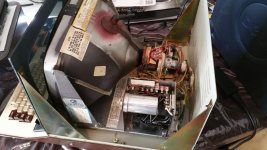
Come to think of it now -- I'm wondering if that BNC 'output' is meant to have a cable that goes up to the unmarked BNC connector on the monitor? Weird.


It has a female 3 prong hanging above the male 3 prong for the wall outlet. Not sure what it's for. The CRT has its own power cord, when I plug it in, I can see the back of the CRT tube glowing a little, but that's it. When I plug the bottom in and flip the power switch, the power light lights up, but that's it there. I'm wondering if that BNC connector on the back means what it says and I could connect the bottom half to another monitor to confirm it's alive?
Here's inside the monitor:

Come to think of it now -- I'm wondering if that BNC 'output' is meant to have a cable that goes up to the unmarked BNC connector on the monitor? Weird.

